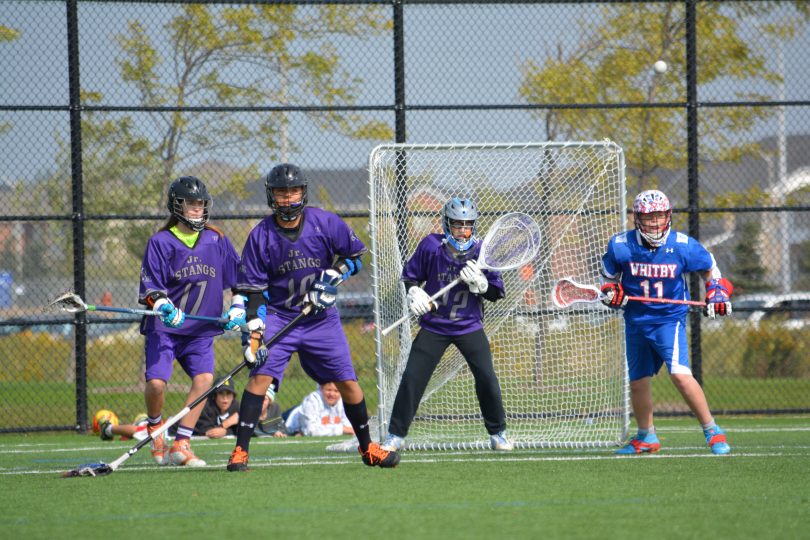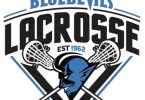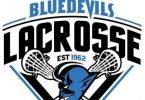With the snow barely off the turf at Citywide fields, the London Jr ‘Stangs field lacrosse teams started their 2015 season in late March. Eager to get back in action, approximately 70 registered players were all smiles despite the chilly temperatures.
In Ontario, the spring field lacrosse season is fast and furious! With only a few practices on the agenda before the April 11 season opener, the Jr ‘Stangs were hard at work brushing up on their outdoor skills. While there are many aspects of field lacrosse shared with the indoor box version, there is no confusing the two very different sports.
Based on the ancient Aboriginal game, field lacrosse is the oldest team sport in North America in contrast to indoor box lacrosse, which only came to be in the 1930s. Field lacrosse was an Olympic sport over 100 years ago, with recent efforts aimed at returning it to the 2024 games.
Field lacrosse continues to be a major sport in North American colleges and universities, including our own Western Mustangs which run very successful men’s and women’s programs. Canadian minor club teams are also becoming more prevalent in U.S. tournaments, allowing the more dedicated Canadian players to continue their seasons once temperatures drop here at home.
Unlike the more popular indoor ‘Toronto Rock style’ lacrosse, the field game is played on outdoor fields (110 yards by 60 yards). The 6-foot square nets are placed 45 feet within the end line, allowing for a large playing area behind the net. Ten players take the field at a time; three defenders in the defensive end; three midfielders free to run the whole field; and three attackers, whose job is to score goals in the offensive end.
The brave goalie faces the hard rubber ball (which can reach speeds of up to 160km/hr) with minimal protective equipment, relying mainly on their stick to stop shots. Field defensemen carry extra long (up to 6 feet) sticks or ‘crosses’, which they use to check the ball carrier. Boys’ minor field lacrosse is a full contact sport, even in the minor age groups, which include U9 to U17 as part of the Ontario Minor Field Lacrosse League.
In Ontario’s spring league, nearly 200 teams meet for weekend games during the short season, culminating with qualifiers for the older age groups and a Provincial Championship weekend in late May (at which time box lacrosse gets into full swing across the province). London also enters teams in the smaller Ontario fall field league, which runs from early September until Thanksgiving weekend.
Good luck to all of our 2015 field lacrosse teams!
– Story and photos submitted by London Minor Lacrosse Association







